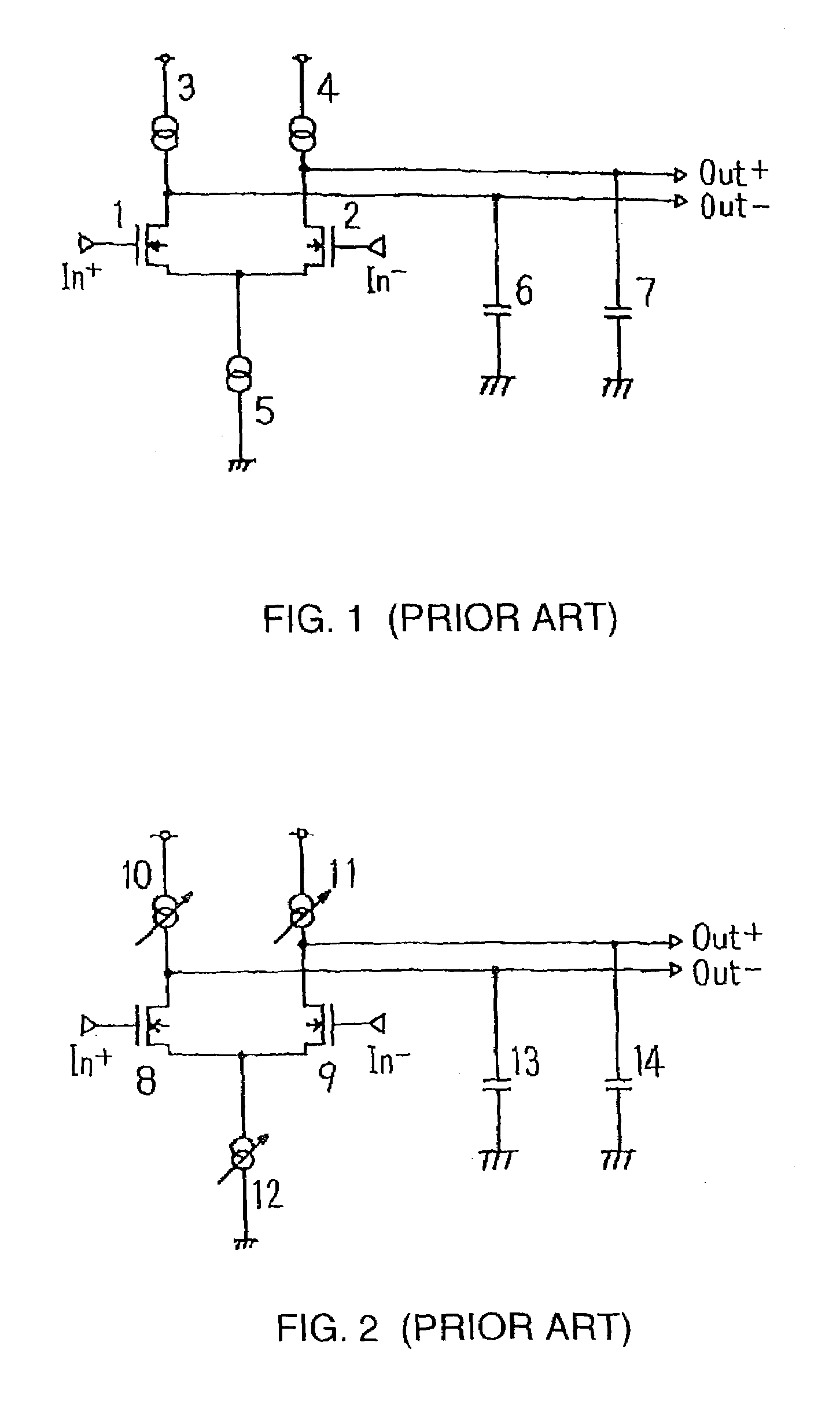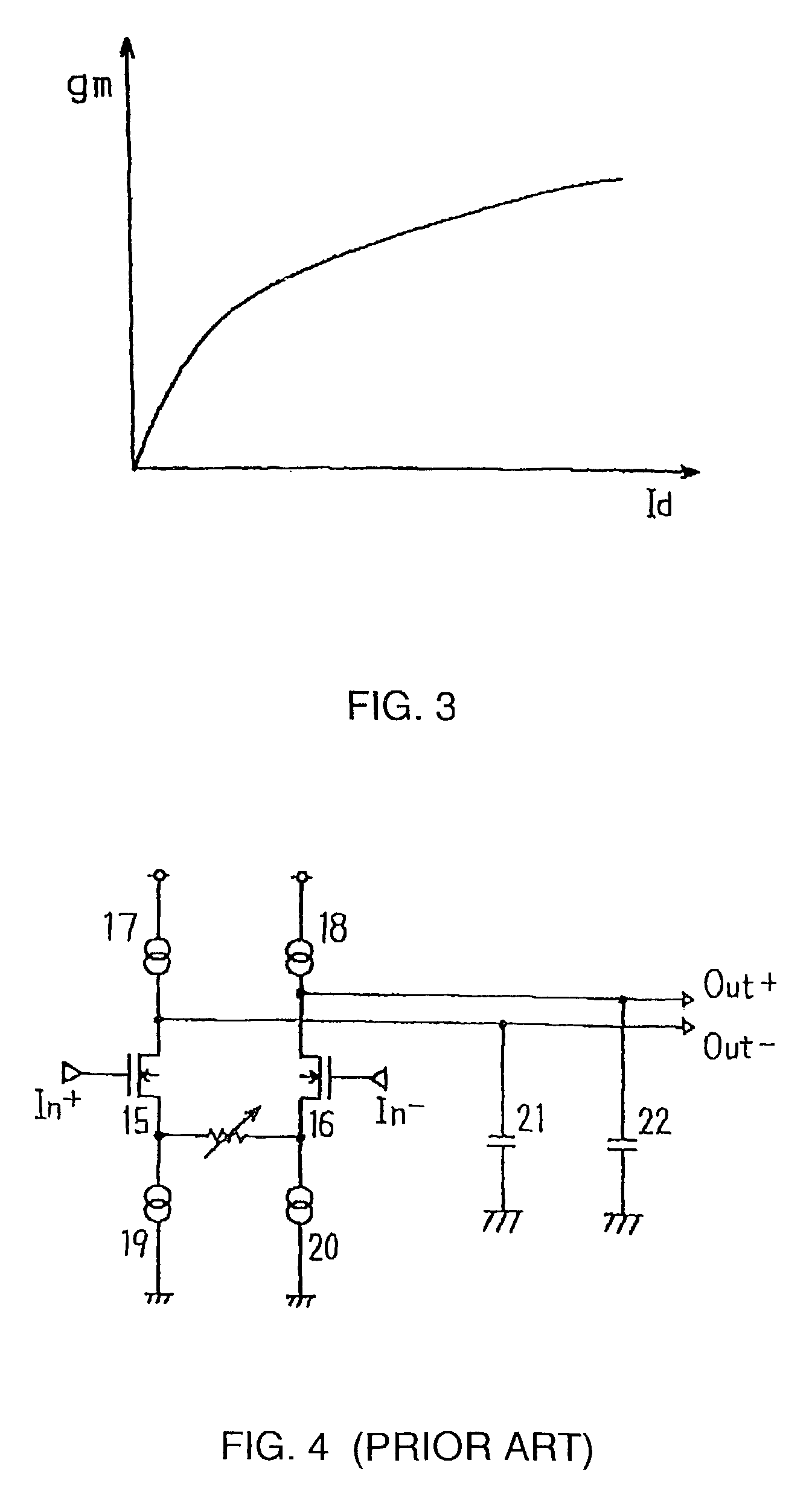Trans-conductance amplification circuit, trans-conductance filter circuit, and filtering method
a filter circuit and transconductance technology, applied in the field of filter circuits, can solve the problems of transistor operating outside, method of varying cut-off frequencies, electronic appliances and their filter circuits, etc., and achieve the effects of avoiding output voltage amplitude reduction, reducing or eliminating, and exploiting noise resistan
- Summary
- Abstract
- Description
- Claims
- Application Information
AI Technical Summary
Benefits of technology
Problems solved by technology
Method used
Image
Examples
Embodiment Construction
[0093]FIG. 9 shows a first example of the present invention. In this example, the cut-off frequency adjustment range is broadened by maintaining the constant current function for the transistor despite a significant current level variation. In FIG. 9, the gm filter circuit 50 automatically doubles the standard cut-off frequency.
[0094]The exemplary gm filter circuit 50 shown in FIG. 9 includes a differential input unit formed by a first N channel transistor N1 and a second N channel transistor N2. A differential input signal is fed into each transistor. A first constant current circuit is formed by a current mirror circuit. This mirror circuit outputs the first differential input signal. A second constant current circuit also is formed by a current mirror circuit. This mirror circuit outputs the second differential output signal. The filter circuit also includes a first variable current source (or constant power source) PS1; a first capacitor C1 and second capacitor C2; and a switch ...
PUM
 Login to View More
Login to View More Abstract
Description
Claims
Application Information
 Login to View More
Login to View More - R&D
- Intellectual Property
- Life Sciences
- Materials
- Tech Scout
- Unparalleled Data Quality
- Higher Quality Content
- 60% Fewer Hallucinations
Browse by: Latest US Patents, China's latest patents, Technical Efficacy Thesaurus, Application Domain, Technology Topic, Popular Technical Reports.
© 2025 PatSnap. All rights reserved.Legal|Privacy policy|Modern Slavery Act Transparency Statement|Sitemap|About US| Contact US: help@patsnap.com



